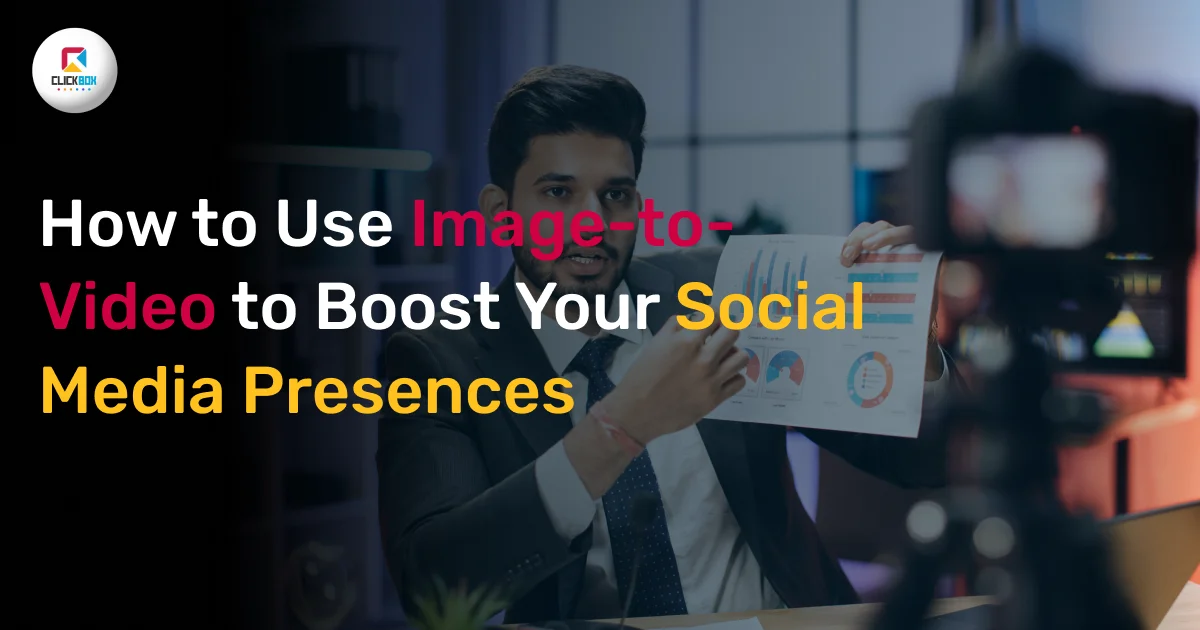Boost Your Social Media Presence with Image-to-Videos
Social media platforms have become the heart of online interaction. The rise of visual content has revolutionized how users engage with these platforms. Images and videos have proven to be significantly more engaging than text-only posts, capturing the audience's attention quickly and effectively.
Visual content can convey emotions, tell stories, and share information more effectively. For brands and individuals aiming to enhance their social media presence, leveraging the power of visual content is essential.
Benefits of Image-to-Video Content
Combining the strengths of images and videos, image-to-video content has emerged as a dynamic and versatile tool for social media engagement. This approach allows creators to transform static images into dynamic video content, adding a layer of depth and interactivity that purely static content lacks.
Image-to-video content enhances engagement and reach by making posts more captivating and shareable. Videos can convey complex messages more succinctly and memorably, thus increasing the likelihood of audience interaction.
Understanding Image-to-Video Creation
What is Image-to-Video?
Image-to-video refers to the process of creating videos using a series of images. This technique can include adding transitions, music, text, and other effects to create a cohesive and engaging video narrative.
Examples of image-to-video content include slideshow presentations, photo montages, and animated sequences that bring still images to life. This method is particularly effective for showcasing products, telling stories, and sharing event highlights in a visually appealing format.
Planning Your Image-to-Video Content
Identifying Your Goals and Audience
Before beginning the development process, it is critical to determine your objectives and understand your intended audience. Are you aiming to increase brand awareness, drive traffic to your website, or engage with your community?
Knowing your objectives will guide the content and style of your video. Additionally, understanding your audience's preferences and behaviors will help tailor your video to resonate with them, ensuring higher engagement and effectiveness.
Selecting the Right Images
Choosing the right images is a foundational step in creating compelling image-to-video content. Select high-quality, relevant images that align with your message and brand identity.
Ensure visual consistency by maintaining a cohesive color scheme, style, and tone. High-resolution images are essential for maintaining clarity and professionalism in your final video.
Creating Engaging Image-to-Video Content
Storyboarding Your Video
Storyboarding is a critical step in planning the sequence and flow of your image-to-video content. Outline the key points and structure your video to ensure a logical and engaging narrative.
Decide on the order of images, and plan where to incorporate text, transitions, and effects. A well-thought-out storyboard will streamline the creation process and help maintain focus on your objectives.
Adding Music and Voiceovers
Music and voiceovers can significantly enhance the impact of your video. Select background music that complements the mood and message of your content. Whether it’s upbeat, calming, or dramatic, the right music can evoke emotions and make your video more memorable.
Voiceovers can provide context and personality to the content, making it more interesting and accessible. Ensure that the audio quality is high and that the volume levels are balanced.
Enhancing with Animations and Effects
To create video from images effectively, integrating animations and effects can make the content more dynamic and engaging. Simple animations can bring still images to life, while transitions help maintain a smooth flow between different segments.
Use effects sparingly to highlight key points without overwhelming the viewer. The goal is to enhance the visual appeal and maintain the audience's interest throughout the video.
Optimizing Image-to-Video Content for Social Media
Platform-Specific Tips
Different social media platforms have unique specifications and audience behaviors, requiring tailored approaches for optimal engagement. For instance, Instagram favors shorter, visually striking videos, while Facebook accommodates longer, more detailed content.
Twitter's fast-paced environment calls for concise, impactful videos, and LinkedIn's professional network benefits from informative and polished presentations. Adapt your video length, format, and content style to fit each platform's preferences and maximize reach and engagement.
SEO and Hashtags
Optimizing your videos for search engines and social media algorithms is crucial for visibility. To boost searchability, include relevant keywords in the video's title, description, and tags.
Incorporate popular and specific hashtags to reach a broader audience and increase discoverability. Additionally, create visually appealing custom thumbnails representative of your content to attract more clicks.
Scheduling and Posting
Timing is key when posting videos on social media. Research the best times to post on different platforms to ensure maximum visibility and engagement. Use scheduling tools to plan and automate your posts, maintaining a consistent presence without overwhelming your audience. Regularly analyze engagement metrics to refine your posting strategy and identify the optimal times for your audience.
Measuring and Analyzing Performance
Key Metrics to Track
To gauge the effectiveness of your image-to-video content, track key metrics such as views, likes, comments, shares, and click-through rates.
Engagement metrics provide insights into how well your content resonates with your audience, while reach and impressions indicate the breadth of your video's visibility. Analyzing these indicators allows for the identification of successful methods as well as opportunities for improvement.
Analyzing Results and Making Improvements
Regularly evaluate your video performance metrics to determine what's effective and what's not. Use analytics tools to gather detailed insights and identify trends.
Based on your findings, make data-driven adjustments to your content and strategy. Experiment with different formats, styles, and posting times to continuously optimize your video marketing efforts.
Conclusion
Image-to-video content offers a powerful way to enhance your social media presence by combining the strengths of images and videos. By following best practices such as planning, selecting high-quality images, adding engaging music and voiceovers, and optimizing for different platforms, you can create compelling videos that resonate with your audience and drive engagement.




 Digital Marketing
Digital Marketing


 Digital Marketing
Digital Marketing Digital Marketing
Digital Marketing



